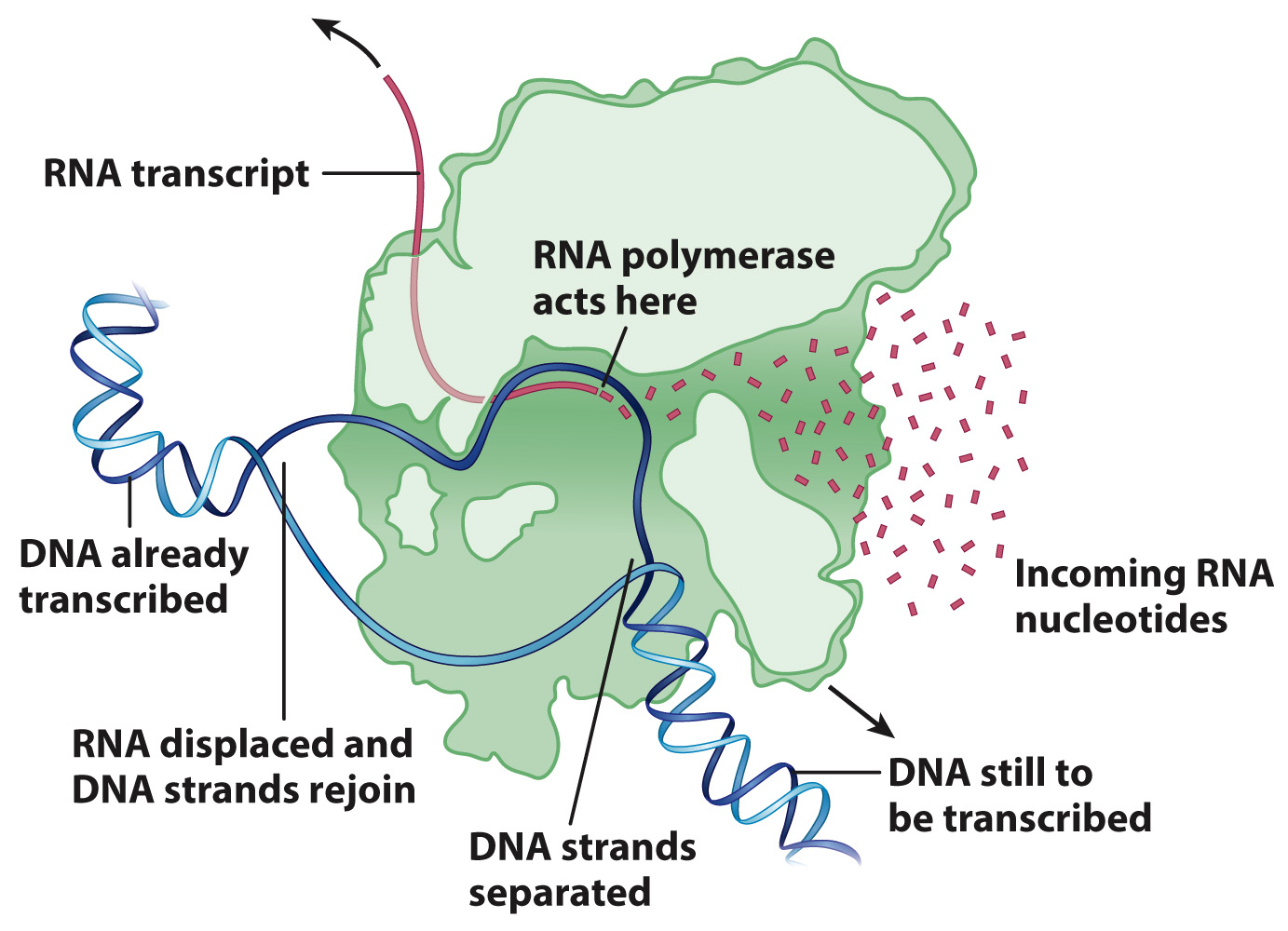The RNA polymerase complex is a molecular machine that opens, transcribes, and closes duplex DNA.
Transcription does not take place spontaneously. It requires template DNA, a supply of ribonucleoside triphosphates, and RNA polymerase, a large multiprotein complex in which transcription occurs. To illustrate RNA polymerase in action, we consider here bacterial RNA polymerase because of its relative simplicity.
The transcription bubble forms and transcription takes place inside the polymerase (Fig. 3.19). RNA polymerase contains structural features that separate the DNA strands, allow an RNA–

RNA polymerase is a remarkable molecular machine capable of adding thousands of nucleotides to a transcript before dissociating from the template. It is also very accurate, with only about 1 incorrect nucleotide incorporated per 10,000 nucleotides.